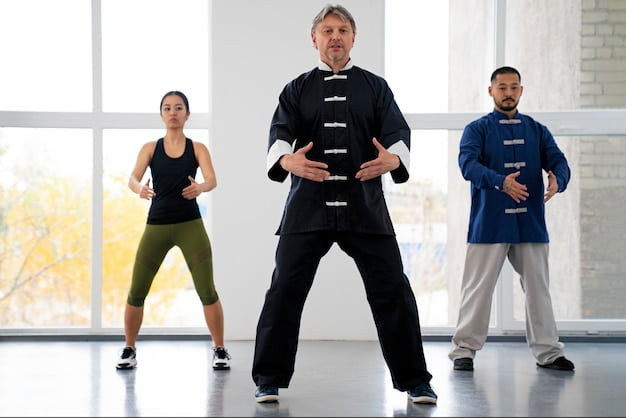Introduction
Tai Chi, also known as Tai Chi Chuan, is an ancient Chinese martial art form that has gained popularity worldwide due to its numerous health benefits. Although often associated with slow and graceful movements, Tai Chi is a formidable tool for self-defense. In this article, we will explore the question of whether Tai Chi is offensive or defensive.
The Traditional Roots of Tai Chi
Tai Chi originated in the 17th century in China as a form of self-defense. It was developed by a martial artist named Chen Wangting, who blended the techniques of various martial art styles to create an effective and practical fighting system. Over the years, Tai Chi evolved into a more refined and graceful art form, with movements that were slower and more controlled.
The Health Benefits of Tai Chi
Today, Tai Chi is known not only for its self-defense applications but also for its numerous health benefits. Studies have shown that practicing Tai Chi can improve balance, flexibility, and overall physical fitness. It can also reduce stress, lower blood pressure, and enhance cognitive function.
The Defensive Nature of Tai Chi
Although Tai Chi is often viewed as a gentle and peaceful practice, it is a martial art at its core. Its movements are soft and flowing, but they are also precise and powerful. Tai Chi techniques are designed to deflect and redirect an opponent’s attacks while using minimal force.
Tai Chi Techniques
Tai Chi techniques include strikes, kicks, and joint locks, as well as throws and takedowns. These techniques are executed with fluid movements that connect the entire body, making them efficient and effective. Tai Chi also emphasizes the use of internal energy, or qi, which can be harnessed to enhance the power and effectiveness of its techniques.
Tai Chi and Self-Defense
Tai Chi is an effective tool for self-defense because it emphasizes practical techniques that can be used in real-world situations. Its movements require minimal strength and are designed to neutralize an opponent’s attacks while maintaining control of the situation. Tai Chi also teaches practitioners to remain calm and focused under pressure, which is essential in any self-defense situation.
Conclusion
So, is Tai Chi offensive or defensive? The answer is that Tai Chi is both. Its movements are designed to defend against an opponent’s attacks while also enabling practitioners to deliver effective strikes and joint locks. However, Tai Chi’s primary focus is on self-defense rather than aggression, and its techniques are executed with minimal force and maximum efficiency. Whether you are interested in Tai Chi for its health benefits or as a means of self-defense, it is an art form that can benefit anyone.





